Patching a Leak in my Sleeping Pad
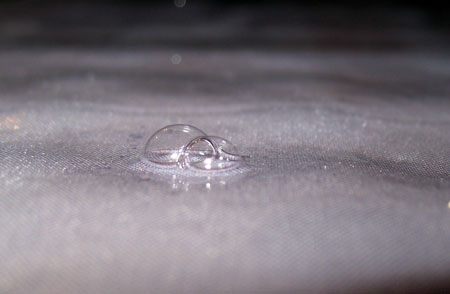
Um, is it supposed to do that?
My usual sleeping pad for backpacking is an REI Lite Core 1.5. I’m actually on my second one. My first was the original style and it leaked from day one, so I eventually exchanged it (and more money) for the current version.
This one was fine for two trips, but had deflated overnight on the third (and most recent) trip. It was bad enough to make sleeping on my side uncomfortable, but I was fine on my back.
After we returned I started wetting down the bottom of the pad – the most likely side to pick up punctures – with soapy water. I’d get about two feet wet and under water in the kitchen sink, and apply some pressure to the filled pad, and look for leaks. Well, finally on the last section I spotted the culprit, thanks to a solid stream of tiny bubbles emerging from it.
I brought it out to the garage and set it on my chest freezer. Soon I noticed that in addition to the ongoing bubbles, I could *hear* the high-pitched squeeeeeeeee of the air escaping, even from 5 or 10 feet away!
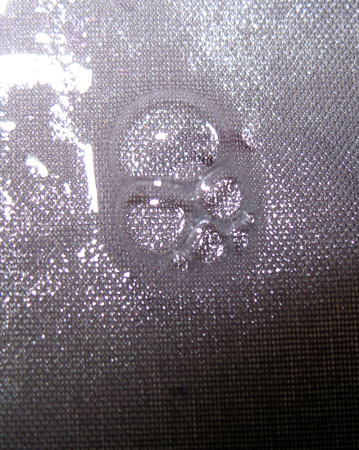
I let the pad dry overnight and patched it the next evening. I used the patch kit from one of our thick 3.5″ REI sleeping pads, as the cheapskates no longer include a patch kit with the Core Lite like they used to.
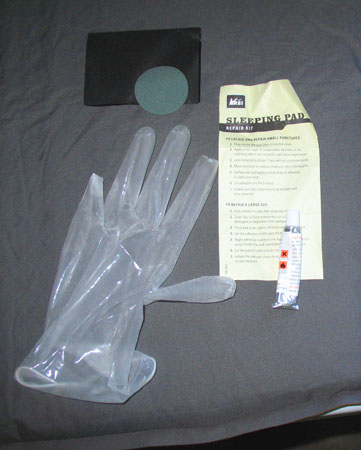
Repair kit patches, glue, and instructions. Using a Nitrile glove, I spread glue on the patch with my finger.
After the pad dried and the puncture was marked, the next step was to put a little patch kit glue on the hole, which I let dry overnight. That may have been a sufficient repair, but the next day I covered it up with a patch from the repair kit to give added insurance.
The patch rolled up when I rubbed the glue around on it, which was a nuisance. But I eventually got the one side covered with a think layer of glue, placed it on the pad and set a flat weight on top of it to keep it pressed in place, and again let it dry overnight.
The next day I checked it and everything seemed good, so I inflated the pad fully and let it stand overnight again. The following day it was fine, and I could lay on the pad without any leak. Problem solved.
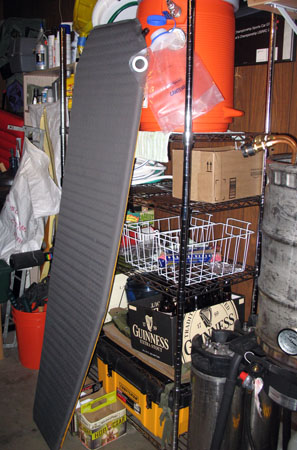
Start of the overnight test. Will the air hold?
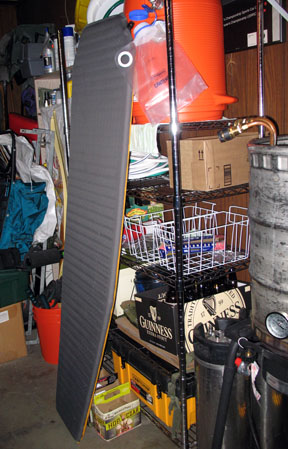
The next day, no change. It held!
Obviously, this leisurely and thorough repair wouldn’t be practical in the field. With a two-hour drying time, your best bet is to inflate your sleeping pad when making camp, hopefully a few hours before you need it. That way you’d have a chance of repairing any holes before you wanted to sleep. Obviously if you pick up any overnight, something like a self-adhesive nylon patch might be your best bet as a temporary fix.